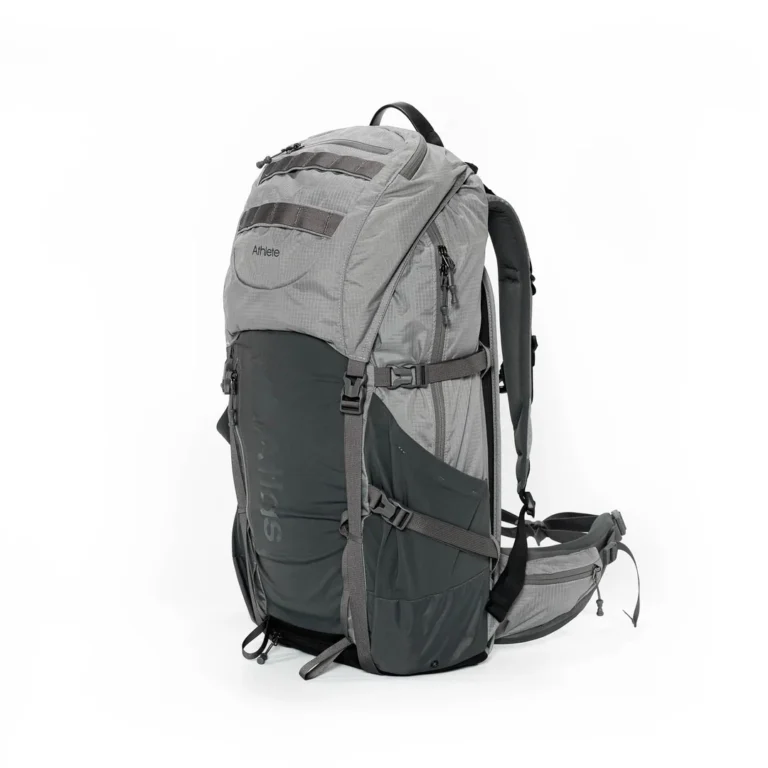I’ve been living on the road full-time for the past seven years, lugging my camera gear across the world for my own adventures, photography jobs, tourism campaigns, and multi-day expeditions.
My camera backpack is easily one of the most important pieces of gear I own, and over the years, I’ve tested quite a few.
For the past two years, I’ve been using the Atlas Adventure Camera Backpack every single day. I live out of my bags, so I can only carry one, and this is the one I use when hiking in the Himalayas, carrying onboard flights, or shooting for hotel clients in the tropics.
Honestly, it’s about time I shared a full review of this pack.
Overview of the Atlas Adventure Camera Backpack
The truth is, there’s no perfect camera backpack; everyone’s needs are different. But for me, this is the closest thing I’ve found. It’s the most versatile, most comfortable, and most durable camera pack I’ve used.
Okay, I’m aiming for a fair review here and I’ll include a few things I’d change below but you’ve probably caught on by now that I’m a big fan of this pack.
Here’s a quick rundown of the key features that make the Atlas Adventure stand out:
- Origami Camera Core: Unique single-fold system replaces bulky cubes - instantly adaptable to different gear setups.
- Trekking Pack Design: Built like a serious hiking pack with a proper internal frame, full-size hip belt, and padded shoulder straps.
- Expandable Capacity: Expands from a sleek 35L to a generous 60L - great for travel and multi-day treks.
- Airline-Compatible: Fits under most airplane seats while still carrying a full kit (even for alpine or remote expeditions).
- Adventure-Ready Storage: Enough room for jackets, layers, food, and technical gear.
- Pocket Game Strong: So many pockets I don’t even use them all but they’re there when you need them.
- Laptop Ready: Full-sized laptop sleeve fits my 16-inch MacBook Pro easily.
- Size Customization: Comes in different torso sizes - properly fitted to your body like a real trekking pack.
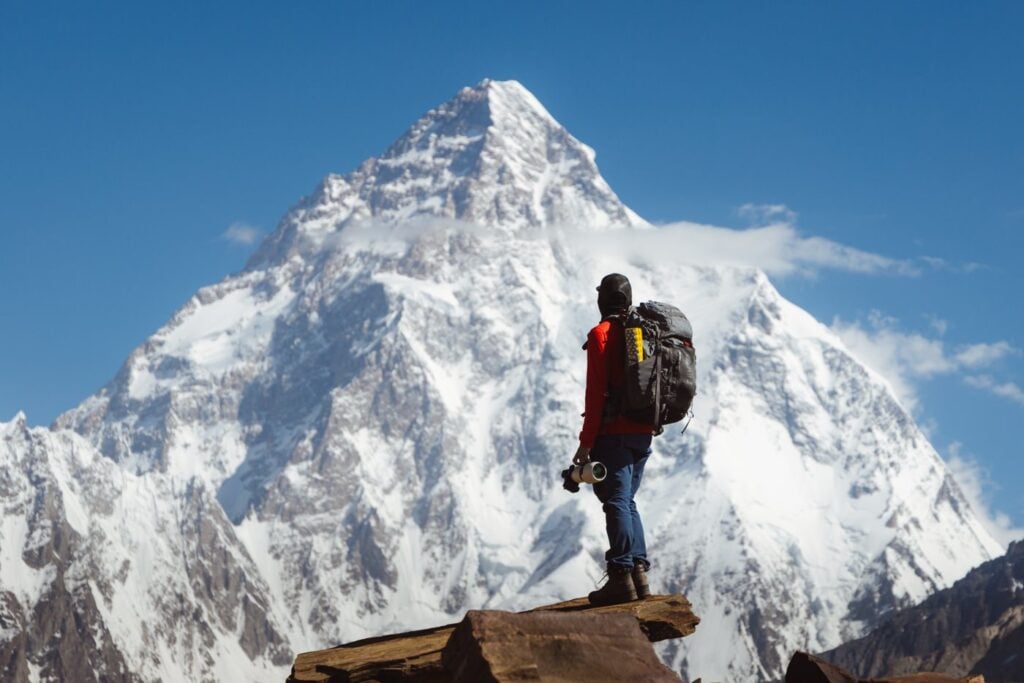
Comfort
I’ve used a lot of camera packs over the years including the popular F-Stop Tilopa, Lowepro ProTactic BP 450 AW II, and others. They’re all great at protecting gear and ticking travel boxes. But none of them felt truly comfortable to hike with.
That’s where the Atlas Adventure stands out.

Most camera backpacks are built around the gear not the person carrying it. And when you're lugging a heavy load through airports, up mountains, or across multi-day treks (especially with primes and telephotos at 6,000+ meters altitude), comfort quickly becomes the most important feature.

This pack is built like a real hiking backpack, and that's the most important feature for me.
- Shoulder Straps: Genuinely the thickest I’ve used on a camera pack. More like what you’d find on an Osprey or Deuter trekking pack. That said, they’re almost too thick for a Peak Design Capture Clip but there’s a clever strap running down the front that works as a mounting point.
- Hip Belt: Wide, dense, and properly shaped (ensure you get the full hiking belt, not the airport belt). This isn’t an afterthought; it’s a hiking-grade load-bearing belt that actually works when the bag is fully packed.
- Torso Sizing: Maybe the most important part. Atlas offers different pack sizes based on torso length, and they’ll guide you through the fitting process when you order. This isn’t a one-size-fits-all pack, it’s fitted like a serious hiking pack should be.
If you're carrying real weight and doing real travel, this is the kind of comfort that matters.
Space
The second most important thing is how a backpack manages your gear, and how much room is left for everything else you actually need when traveling and hiking.
When I’m in the mountains, this is my day pack. It’s bigger than everyone else’s, sure, but I’m usually loaded up with camera bodies, drones, and multiple lenses. Even with all that, I still manage to fit jackets, water bottles, snacks, and layers for the hike.
If you want to know what camera gear I carry, it's easier to watch the video above or read my current camera gear guide here.
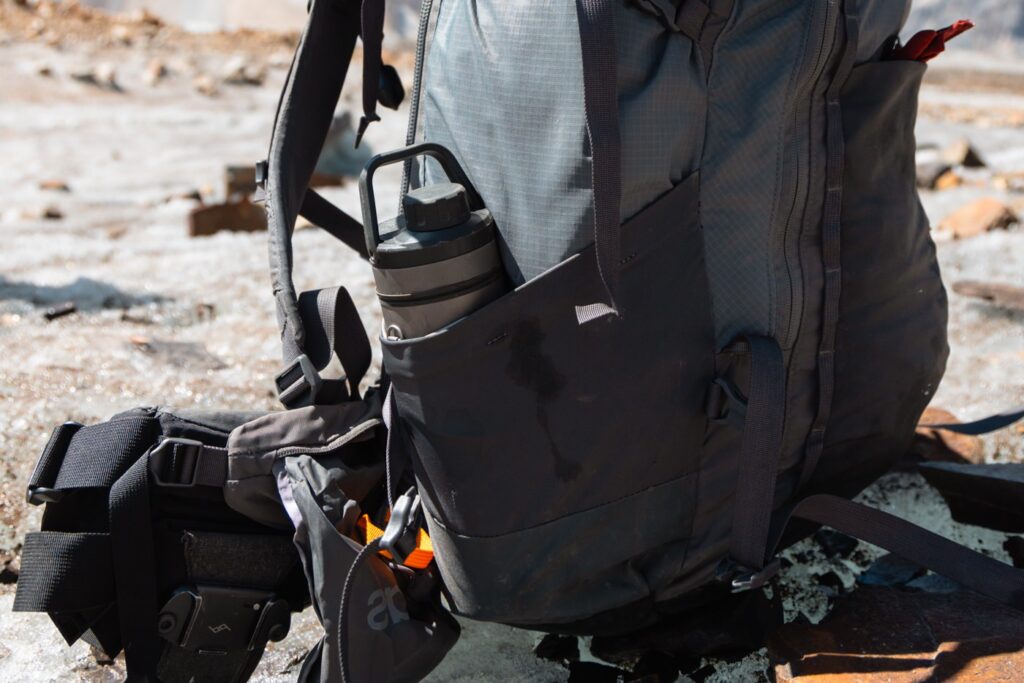
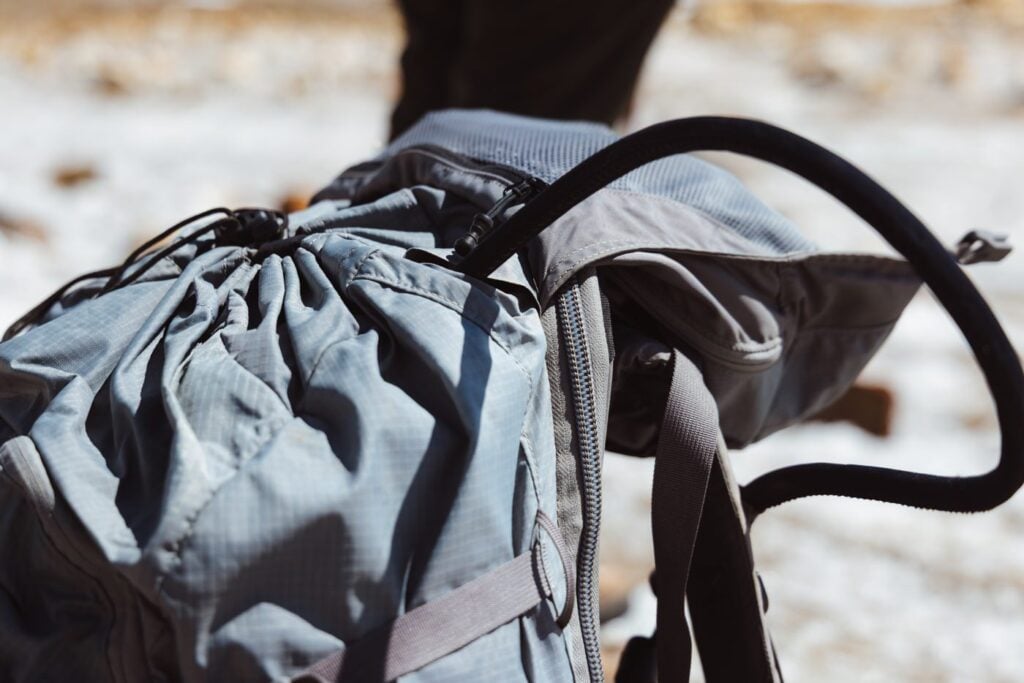
- Drink Holders on Both Sides: Fits standard bottles, and there’s also an internal sleeve for a hydration bladder.
- Full-Sized Laptop Sleeve: Carries my 16-inch MacBook Pro securely. This is how I travel with both my camera kit and mobile office through airports and across continents.
- Two External Pockets: I hardly use them, but they’re there for filters, jackets, or other quick-access items.
- Stretch Front Pocket: Elastic and deep, I always stash a down jacket or Gore-Tex layer here on hikes.
- Massive Lid Compartment: The biggest I’ve seen on a camera pack. Even when it’s empty, it wraps neatly over the top thanks to the clever shaping. Inside are three zip pockets for organizing smaller items.
- Top Drawstring Compartment: Where I pack hiking clothes, food, towels, or whatever else I need depending on the day. Easy to access and compresses well.
- Side Compression Straps: Thoughtfully placed — essential when the pack’s fully loaded.
One downside: when it’s packed to capacity, the bag looks massive. That’s not ideal when flying budget airlines. But I’ve gotten around this by cinching everything down with the compression straps — helps it look more compact, and so far, it’s worked.
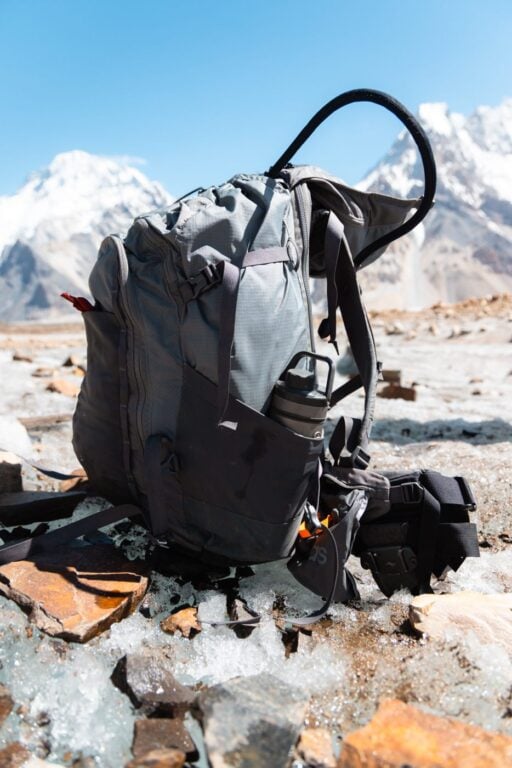
Materials & Durability
After two years of daily use through airports, expeditions in Nepal and Pakistan, and island hopping in Asia and the Pacific, the Atlas Adventure Camera Backpack has proven to be exceptionally durable.
Key Materials:
- 240D Double Ripstop Shell: The exterior is crafted from a 240-denier double ripstop fabric, providing a balance between lightweight design and resistance to abrasions and tears. Honestly I don't know much about what this means but I know I haven't got any rips on the outside and I'm pretty rough with it.
- Weather Resistance: The pack features water-resistant materials and water-tight zippers on the exterior compartments, offering protection against snow and light rain. But when it really pours, you'll want to use the rain cover that's also included.
- YKK Zippers & Duraflex Buckles: High-quality YKK zippers and Duraflex buckles are used throughout. These I do know, and show the quality and offer real reliability in demanding conditions, including ice and heat.
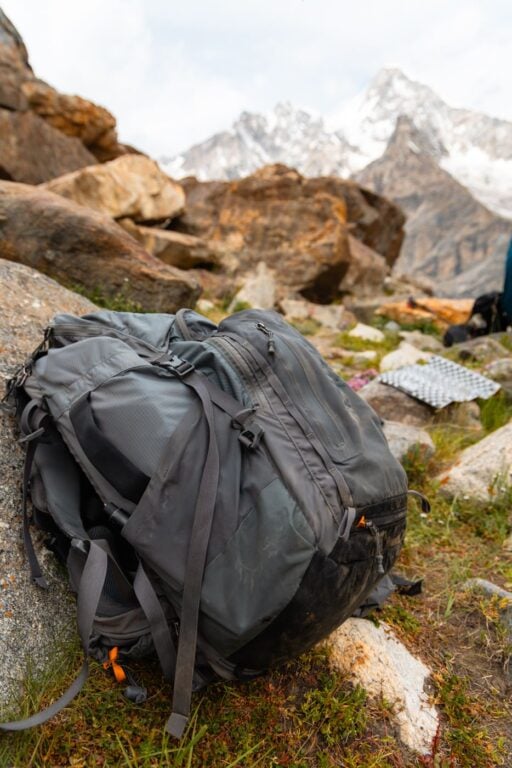
Real-World Performance:
I’ve dragged this backpack over rocks, ice, exposed it to saltwater on longtail boats, and left it in extreme cold during high-altitude treks. Despite this, the pack has shown no signs of wear or failure. I'm honestly kind of surprised that the materials have held up so well, with no rips, tears, or broken components to date.
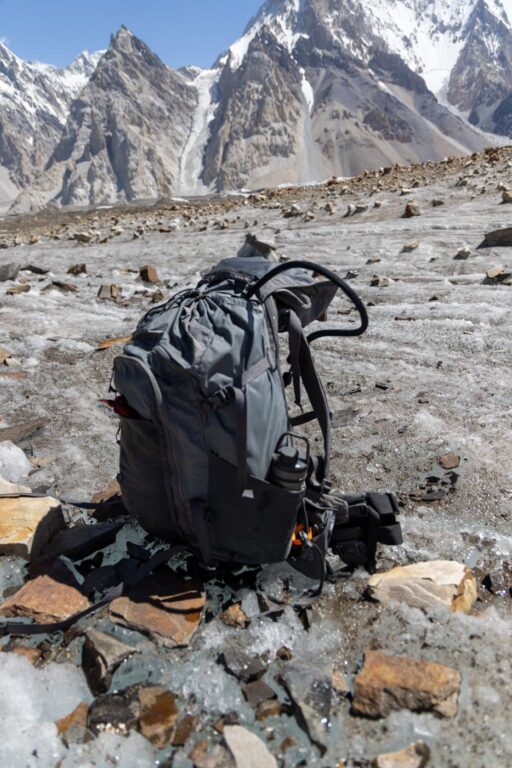

Does it Work as a Carry-On?
Short answer: yes — as long as you compress it properly.
The Atlas Adventure Backpack is deliberately designed to fit within most airline carry-on size limits. The listed dimensions are roughly 21.5 x 13.5 x 9 inches (55 x 34 x 23 cm), which keeps it just within standard international cabin baggage limits, typically around 22 x 14 x 9 inches (56 x 36 x 23 cm).
And at real airports, over two years of full-time travel, I’ve never been forced to check it, even on budget airlines which is what I usually fly.
That said, the real issue is weight, not size. Fully loaded with camera gear, the pack EASILY exceeds airline carry-on weight limits (usually 7–10 kg). I usually work around this by stuffing my jacket pockets with lenses before check-in and it hasn't failed me yet.
The downside here is that the pack is one of the heaviest camera backpacks for travel (5.95 pounds or 2.7 kg) and built like a legit trekking pack, which is great for support but not for airport scales.
Most airlines have a 7 kg (15.4 lb) carry-on weight limit, and due to the weight of the pack I can only ever get away with my laptop, one lens, and a jacket in the bag; the rest go in my jacket or pants pockets until I get to security.
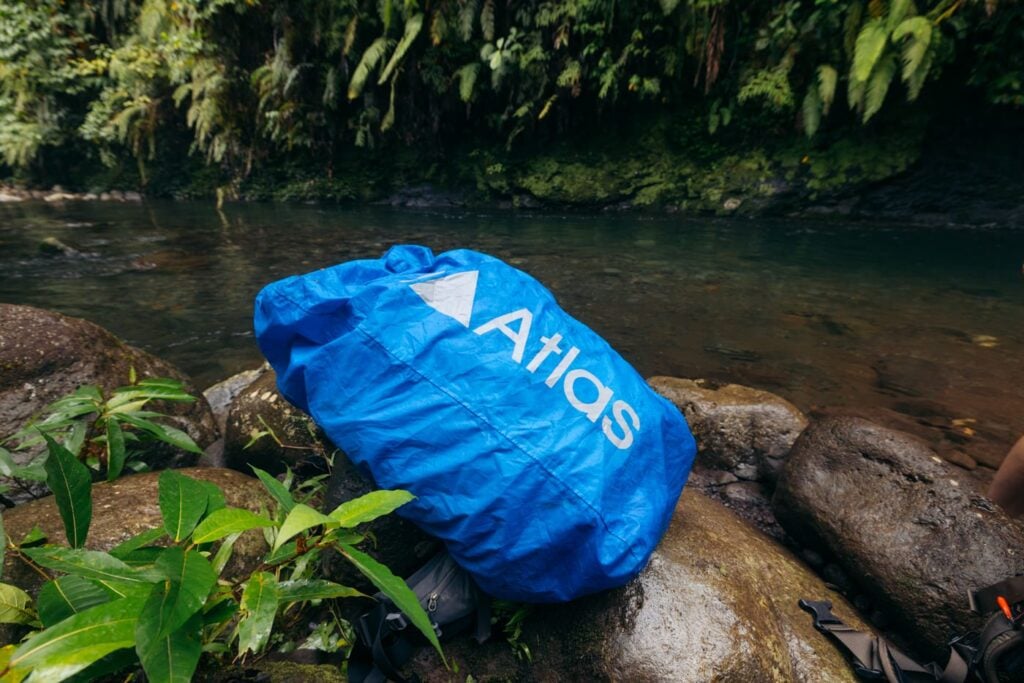
What Would I Change About the Atlas Adventure Pack?
There’s honestly very little I’d change. I think I’ve found my pack for life. Well, until something truly groundbreaking comes out.
All the big boxes are ticked: comfort, space, durability, and carry-on compatibility. But if we’re being thorough, here are a few points worth noting:
- Weight: At around 2.7 kg (5.95 lb) empty, it’s heavier than most camera packs. If there were a way to shave off some weight without compromising comfort or structure, I’d be all for it. That said, I’d rather carry a few extra grams than deal with flimsy straps or back pain.
- Price: It’s expensive, no getting around that. But this is a pack you’ll likely use for a decade or more. For serious travel photographers, it’s more of a long-term investment than a splurge.
- After a long stretch in the tropics, I noticed a bit of mold developing on the camera straps. It was easy enough to clean off with vinegar and hot water, and importantly, nothing got inside the pack. But it would be great if the exterior materials had better mold resistance... maybe a different coating or fabric blend?
Overall, these are minor gripes for a pack that’s carried my gear across the world without fail.
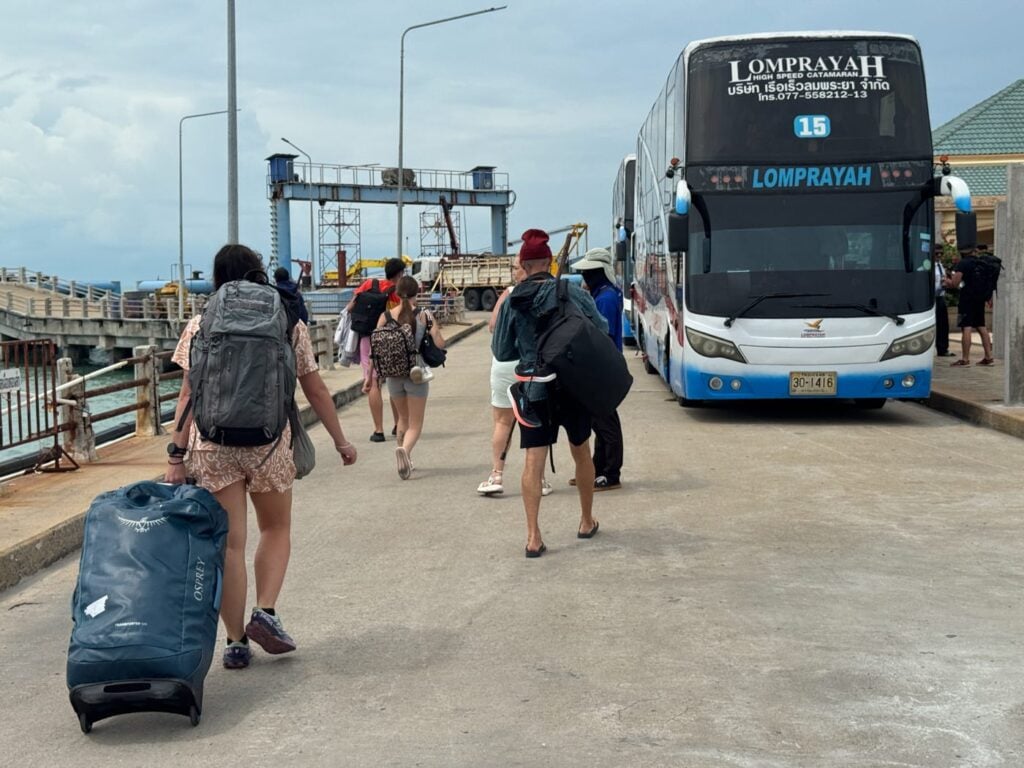
Where to Buy This Pack
The best place to purchase the Atlas Adventure Camera Backpack is directly from Atlas Packs. They offer personalized fitting support, just measure your torso length and select the appropriate size, or reach out to their team for assistance.
This ensures you get a pack that fits your body properly, which is crucial for comfort during long treks or long travel trips.


